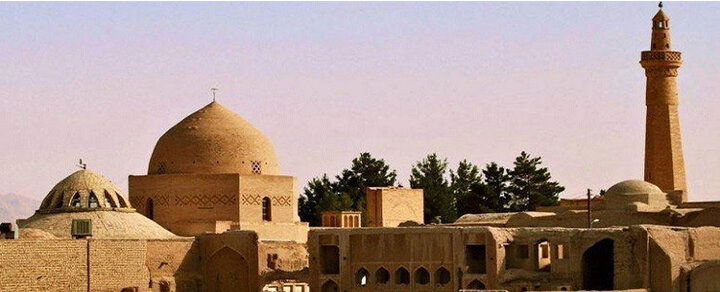Na’in Mosque: : a triumph of beauty and functionality in Islamic architecture

TEHRAN – Stepping into Na’in’s Friday Mosque may be the major highlight of visiting the oasis city in the central Iranian plateau.
Constructed between the 10th and 11th centuries, it was one of the first mosques constructed in the country. The mosque, however, does not conform to the usual four-iwan plan of its time.
Many parts of the interior (including the mihrab) are decorated with finely detailed stucco work while the exterior facade and minaret are simply decorated.
The courtyard is ornamented with 14 columns, each of which displays a different brickwork pattern. Other highlights include an exquisitely carved wooden minbar, which an inscription identifies as being 700 years old, and an underground prayer hall, designed to keep the faithful cool in summer and warm in winter.

Its underground prayer hall is designed delicately to keep the faithful cool in summer and warm in winter. Some say that place of worship features both beauty and functionality in Islamic architecture.
Alabaster casements have been set in the ceiling of this dug-out basement, which allows natural light to come through. A qanat below the mosque supplies water to the ablutions area.
The terms “Friday Mosque”, “Jameh Mosque” or “Masjed-e Jameh” are used in Iran for a grand communal mosque where mandatory Friday prayers are performed: the phrase is used in other Muslim countries but only in Iran does it designate this purpose.
The history of Na’in dates back to nearly 2000 years, which makes it one of the oldest continuously settled towns in the Iranian plateau.
Na’in lies 170 km north of Yazd and 140 km east of Isfahan. Like much of the Iranian plateau, it has a desert climate, with a maximum temperature of 41 °C in summer and a minimum of -9 °C in winter.
In ancient times, the city was at the crossroads of a desert road connecting Tabas and Mashhad, and has been an important junction of converging trade routes since Sasanian times. Nain was known for its pottery and textiles; Today it is best known for its fine hand-knotted carpets and hand-woven camel wool cloaks, which are made in the surrounding villages.
AFM
Leave a Comment